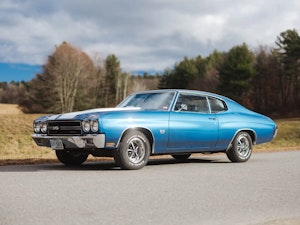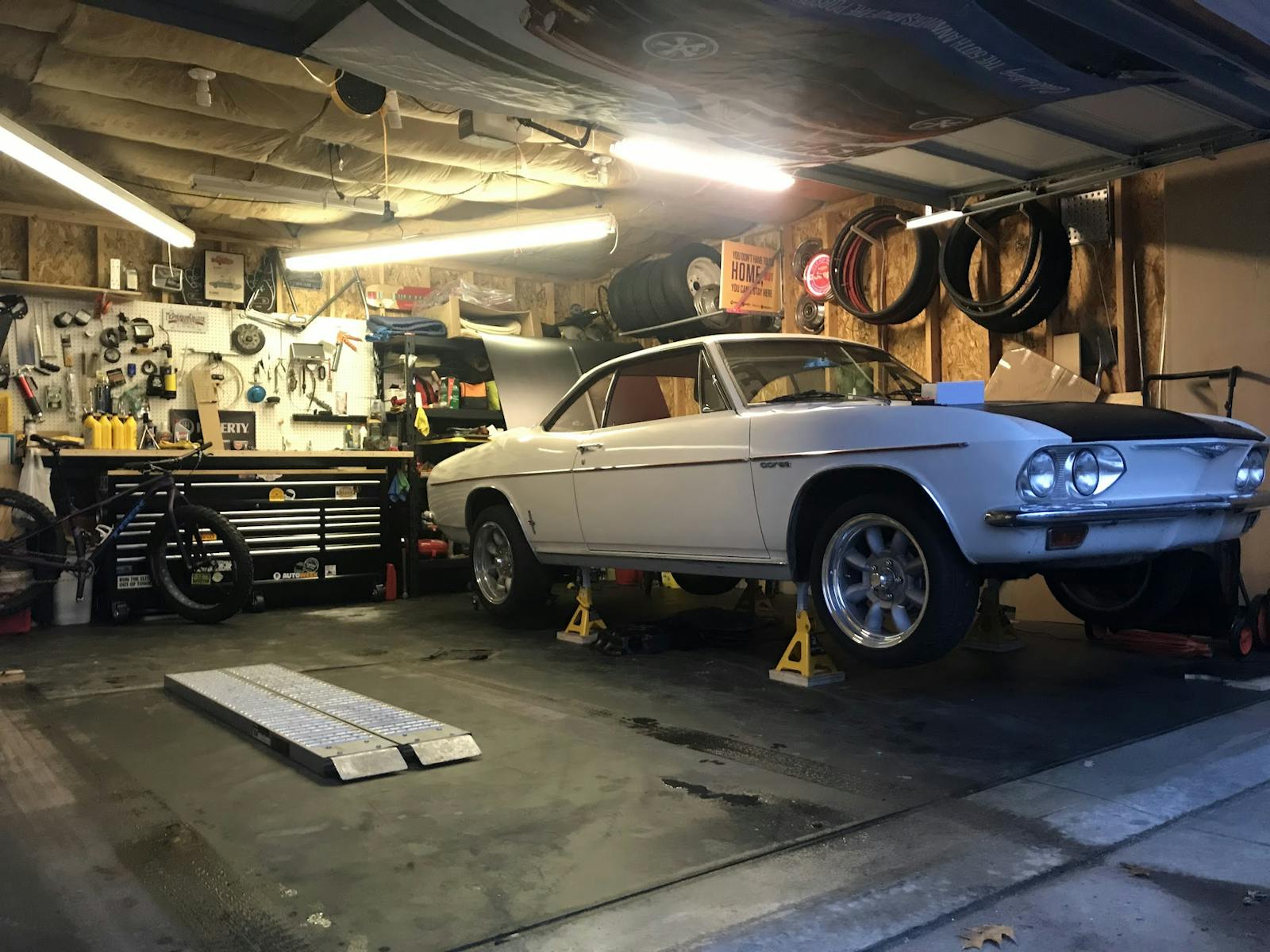Media | Articles
Why Did This Rebuilt Chevrolet 235 Inline-Six Seize after 10 Miles?
The feeling of success having rebuilt a mechanical object is a high that can often only be eclipsed by the soul-crushing low of having said object self-destruct right before your eyes for seemingly no reason. It’s a real feeling felt by many a garage dweller whether they want to or not. Faced with the options of wiping your hands and walking away forever or digging in and finding out what went wrong, it’s tempting to leave. Some people are brave enough to pick up where others leave off on jobs like this though and occasionally they bring us along for the ride.
One such operation is Jim’s Automotive Machine Shop, Inc. It is a YouTube channel I enjoy watching for the informative and fun projects and banter between the father and son, Jimmie and Nicolaus, who run the place. These are the guys who pick up where the DIY folks leave off and one of the more recent engines to cross their threshold was a Chevrolet 235-cubic-inch straight-six.
This particular engine looks relatively well put together, but nothing that was well put together has catastrophic failure in the first handful of miles running down the road. This engine came with a note saying it had seized though the first thing Jim and Nicholaus do is put a pry bar on the balancer and find that it turns over by hand with minimal fight. After agreeing to a rough plan of tearing the engine down completely and then freshening up anything that needs it before reassembly the pair get to really turning the screws on disassembly.


Each step in taking something apart can tell you something if you know what you are looking for. It is fun to see what their experienced hands and eyes are looking for in real-time as the video unfolds. Yes, this is a 46-minute video but it’s worth grabbing a cold drink and learning from someone who has clearly been inside his fair share of engines as they show not only the process of disassembling this Chevy but also his personal process for inspection. What he is looking at, in what order, and how his theory on what might have happened changes with each bit of new information. It’s a process unique to each person and seeing how others do it has helped me further develop my own.
Marketplace
Buy and sell classics with confidence

We won’t ruin the fun by completely giving away the problem that ended up being the cause, but we will give the hint that removing the valves required two hammers. There are also updates on this project in more recent videos on the Jim’s Automotive Machine Shop, Inc. YouTube channel if you are curious about how it gets fixed.
***
Check out the Hagerty Media homepage so you don’t miss a single story, or better yet, bookmark it. To get our best stories delivered right to your inbox, subscribe to our newsletters.















Great Video! Thank you Kyle. A really good reminder to always take things all the way apart when cleaning, then when you get the block back, clean, clean, clean! Then, w=hen you’re putting an engine together, always check your clearances. Take your time.
Several good reasons why I gave up doing my own engines long ago; it’s more practical and often cheaper to use a reliable shop! Plus, you might have some warranty rights! Building an engine is fun if it has a happy ending; otherwise… Heartbreaking to have a brand new mill tank! The R&R, too!
I can save enough doing my own body work and paint to afford to farm an engine out occasionally, and I have the tools for that — and painting. Slow, but pretty good. Wick age 79
I rebuilt my first engine when I was 20 and on a hiatus from College. I worked on it in evenings after the day shift at a shop at an auto parts and hardware store I used to work at in hardware and the warehouse. Got a lot of razzing from my co-workers saying it would never run. It was quite a gratifying moment when I fired it up for the first time without any exhaust system connected. It ran well until I traded the car a few months later. Now some 40 years later, I’ve embarked on rebuilding another of the same engine. I’ve studied many others’ experiences and advice, and although I’m a little smarter, a lot less strong, I’m confident I can do it again. Can’t give up trying.
Somebody post the TLDR (or TLDW in this case). 🙂
Pretty blue straight six does not run. Fixing ensues.
LOL!
never…ever hit a ball pean hammer on another one. I saw a tech do that and a piece shot off and landed 1 inch from his heart. Dr’s would not operate for a year waiting for it to move away from his heart.
I did that one removing a ujoint many years ago. The piece wound up in my thumb and stayed there for quite some time. When I was at Danang in 1969, I got to picking at it and realized what it was. I could not get it out and went to the infirmary to get it taken out. The medic did not see a lot of humor in it when I told him when it happeded. He did go ahead and remove it and bandage it and it healed okay. I still have the ball pean hammer with the round chip missing out of it.
I warned a friend about hammer on hammer and he said he did it all the time. Shortly after that he had a piece break off and it was like he had been shot is the arm with a 22
It’s really a rare occurrence, but when a piece of metal breaks off a hardened steel object it shoots off like a bullet! This was tested on “Myth Busters” and they couldn’t get a piece to break off a hammer. Might be a flaw in the metal, or a crack from many years of hard use (they were using new hammers). Again, rare, but when it DOES happen, watch out!
i use a brass or a bronze hammer to strike a ball peen or any steel driver.
I rebuilt my first engine when I was 19. I was a trainee at a Chevy dealership and worked on it at nights after work. A 66 Supersport with a 396-375 horse. I was getting rushed by the boss to get it out, so I worked on it all day on a Saturday , started it up and headed for home about 5 miles away. Did I mention it had solid lifters ? Well, I was in such a rush I forgot to set the counter locks and it started tapping on the way home. I got 2 blocks from the house and turned it off because they were so loud and rolled into the driveway. Amazingly nothing was damaged !
I once bought a fresh “race-ready” short block at an estate sale, basically just for parts since it was seized. Taking it apart I found the spacer between the block and timing gear had been left out, binding the cam. Added the spacer, slapped a street head on it and drove it for very many miles.
I had that same experience buying a set of bearings from my local NAPA in 1973. Even though marked .030 on the outside of the box, one set of mains was two different thicknesses.. It taught me to check every single part I put into a motor and never assume anything. Since then I have seen the same thing happen with pistons, rod lengths, etc etc..
That came as a surprise to me. Thank you.
I pulled the head off of 235 6 cylinder to get the valves turned when I got it back I had put the head back on start of the motor didn’t have any oil on the Rockers what why was it doing that I found out there is one bolt with a hole in it and if you don’t get it in the right place you won’t get any oil up there is that what happened to his engine?
A father-and-son machine shop rescues a freshly rebuilt inline-six that locked up after only a handful of miles. What’s their solution?
Buy a Ford.
Maybe they shop that previously did the rebuild removed the shims and then used a thicker bearing on one side ( yes…very weird) to make up the difference?
Had enough Fords don’t want any more thanks
Yea I can relate to to possible injury incurred by metal parts splintering. One Year when I was younger i was splitting wood with my father, well after hitting a wedge with the sledge hammer , a piece of metal splintered and shot into my fathers arm like a bullet. pierced the skin and landed into the muscle. In the ER after x rays we seen the piece and had to be extracted by surgery. This wasn’t a good bonding time.
Lots of issues in this engine. 1. Lack of proper cleaning during prior overhaul, both the block and the rocker arms. 2. Failure to measure bearing shells with a ball mic prior to assemble. 3. Failure to Plastigauge the bearings to check clearances during assembly. 4. F’ing up the valve stems based on an outdated and mistaken belief that crosshatching improves lubrication. 5. Guide clearances and use of umbrella seals were fine based on my experience with dozens of engines. 6. Valve seizure likely due to lack of assembly lube, poor oil splash/vapor in the head for valve stem lubrication as a result of low oil pressure and the aforementioned valve stem crosshatching which increased friction and heat. 7. Low oil pressure from excessive clearance in the main bearing with the .020 bearing shell. 8. Lack of hardened exhaust valve seats for unleaded fuel durability. 9. Incorrect valve/guide interference angle grind for optimum valve sealing. 10. Bearing and crank wear indicates the engine may have mildly seized up from lack of lubrication … sort of a “soft seize” that by a stroke of luck prevented more severe damage. It would be interesting to know if the crank was salvageable.
I can’t believe I watched this video in its entirety! (I also watched the next video on assembly and found myself wishing they had a video of the engine back in the 61 Chevy pickup it came out of). Very informative and entertaining. Like watching a Sherlock Holmes movie as the mystery unfolded. I plan to look for additional videos from these guys. It was like being back with my late Dad in the garage once again.
A terrific how-to video.
Although specific to a Chevy 235, much of the advice works for any engine.
Thanks,
Dennis